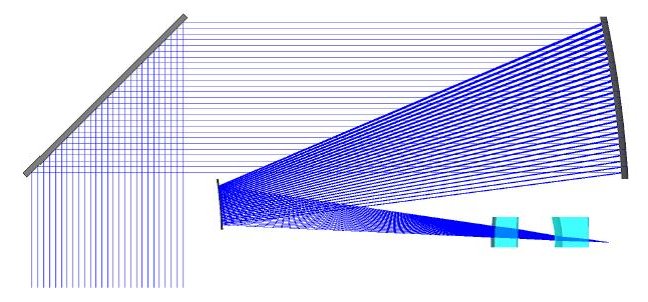Payload Engineering
A spacecraft is composed of the spacecraft bus with its subsystems such as the Power subsystem, and the payload, hosting a number of instruments to for example collect scientific data or to provide specific services, such as communications. Within Payload Engineering, focus on Onboard Artificial Intelligence and Deployable Space Telescopes.
Artificial Intelligence
Artificial Intelligence (AI) and, in particular, deep learning, have been recently explored for applications on board Earth Observation (EO) satellite payloads. Indeed, the capability of AI models to extract actionable information directly from payload data could lead to numerous advantages in terms of agility, autonomy, and data efficiency. Detecting wildfires, floods, or other catastrophic events directly on board the satellite can significantly reduce the delay in the notification of a related alert. Furthermore, onboard AI could mitigate possible data downlink bottlenecks affecting small sat missions by enabling to reduce the data downlink through efficient onboard compression schemes or detecting and removing data with limited information content, such as optical images with high presence of clouds or blur. Finally, the possibility of performing onboard continual learning from payload data could enable the deployment of new applications or the fine-tuning of AI models with no need to retrain and upload new models, improving the sustainability and autonomy of future space assets.
However, numerous challenges must still be tackled to leverage the potential advantages of onboard AI fully. Potential latency benefits due to onboard processing depend not only on the payload data handling architecture but also on the possibility of quickly distributing the onboard generated alerts to the end users. Therefore, research also focuses on novel mission concepts leveraging efficient systems to deliver “messages” from satellites efficiently and with very short latency, such as data-relay of small messages from Low-Earth Orbits to Geostationary Orbits Furthermore, Earth Observation data distributed to the end-users significantly differs from “raw” satellite data, because numerous pre-processing steps, such as radiometric, geometric correction, are typically applied already onboard. However, these steps are computationally intensive and their onboard implementation is challenging, offering exciting research opportunities
Deployable Telescopes
Applications such as Earth Observation require payload which comprise telescopes. Rigid optical telescopes have significant empty volume, especially between the primary and secondary mirror. Thermo-mechanical stiffening is often a high mass contributor to these telescopes. Miniaturization of optical instruments by making them deployable, will make it feasible to cost-effectively launch a constellation of micro-satellites with a high-end performance in terms of Earth observation.
To save volume, the secondary mirror and the baffle can be stowed by folding them inwards during launch. To deal with deployment accuracy and to save mass, active alignment in-orbit is applied instead of thermo-mechanical rigidization before launch. As an example of such advanced technology, a Deployable Space Telescope concept has been studied for a 27U CubeSat. Deployable booms and innovative hinges have been prototyped and characterized. Mission studies for several applications using deployable space telescopes will be performed, such as maritime plastic debris monitoring. Cornerstone technologies for deployable space telescopes, with a focus on deployment and active alignment techniques, will be investigated and prototyped.

-
- Design and testing of a multi-electrode apodized acousto-optic filter for arbitrary polarized light
- The OPS-SAT case: A data-centric competition for onboard satellite image classification
- Direct self-heating power observations in pre-stressed piezoelectric actuators
- A cutting edge 6U CubeSat ADCS design for Earth observation with sub-meter spatial resolution at 230–380 km altitude
- Review on thermal and mechanical challenges in the development of deployable space optics
- The deployable telescope: a cutting-edge solution for high spatial and temporal resolved Earth observation
Contact

Dr.ir. J.A.M. (Jurgen) Vanhamel
Assistant Professor
✉ J.A.M.Vanhamel@tudelft.nl